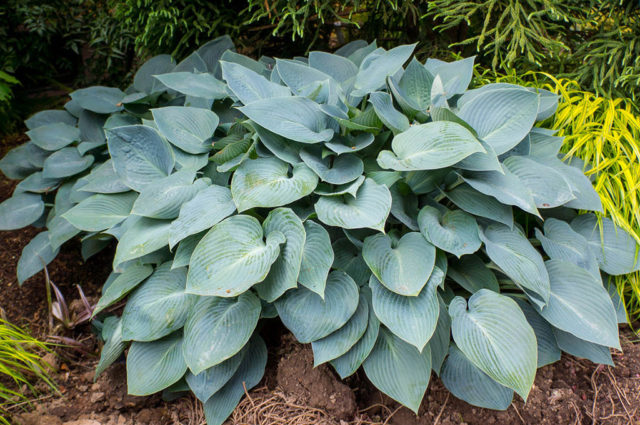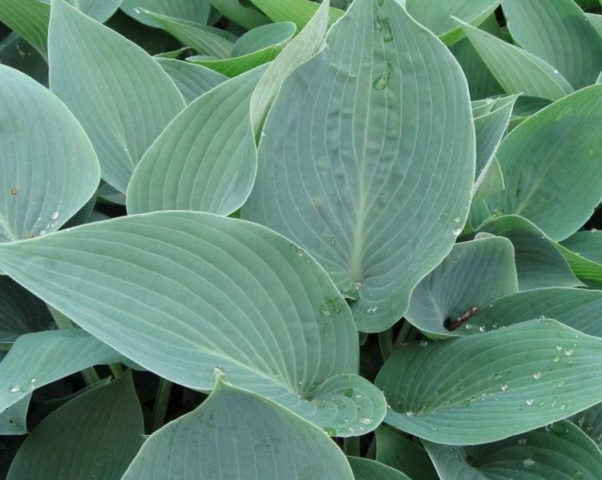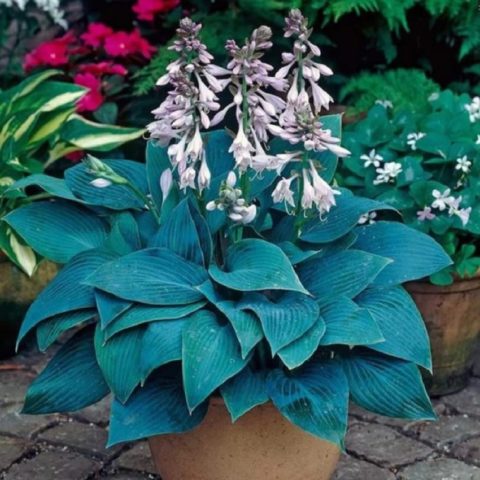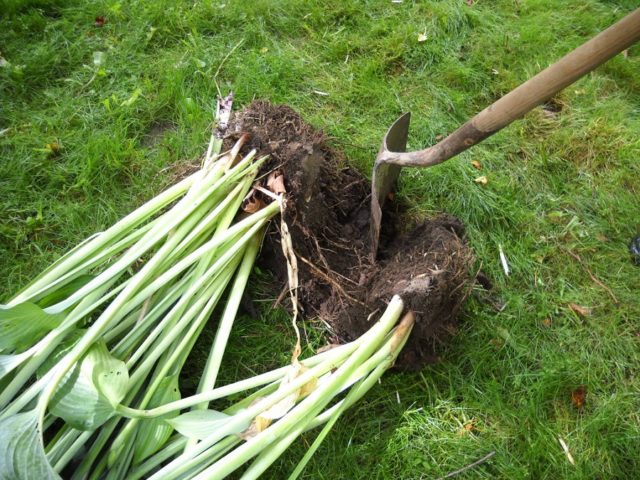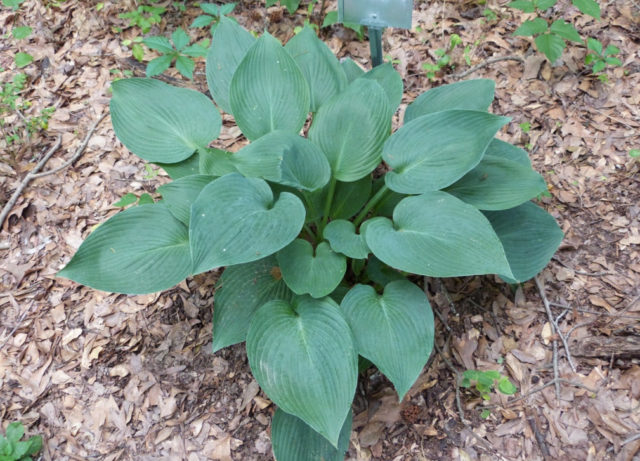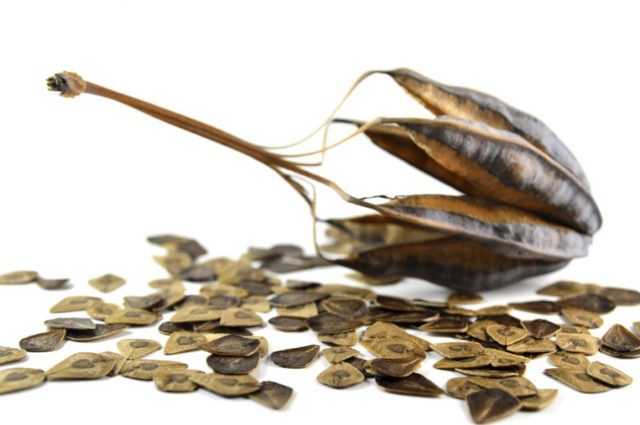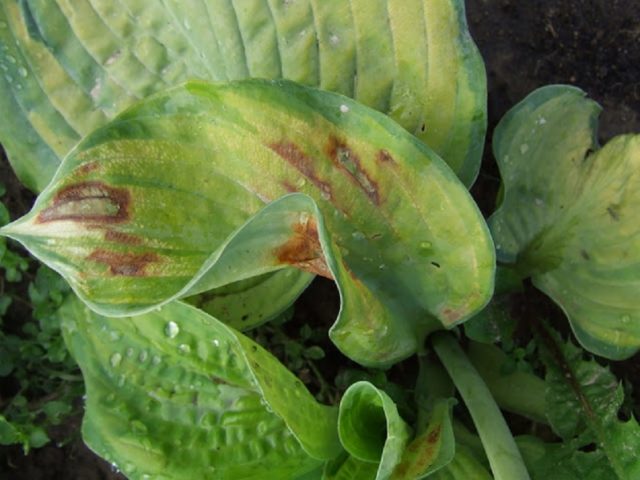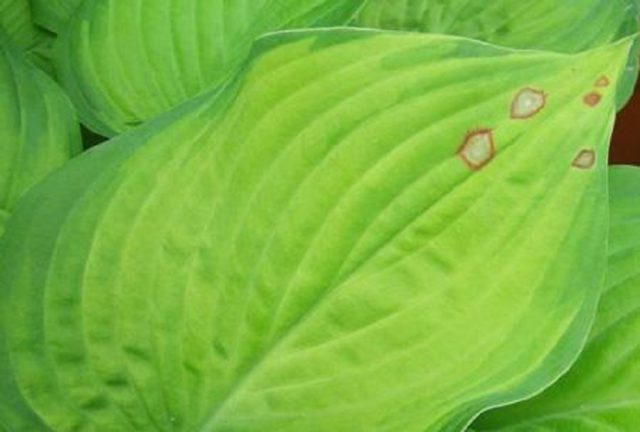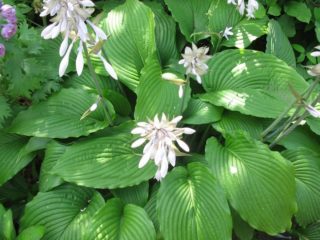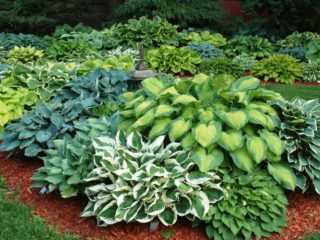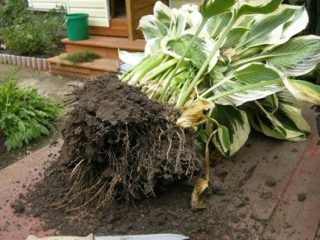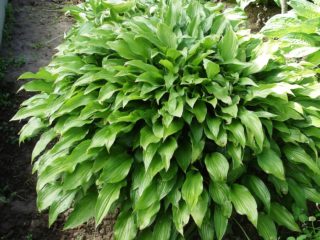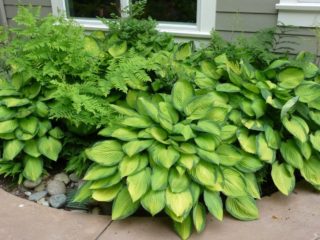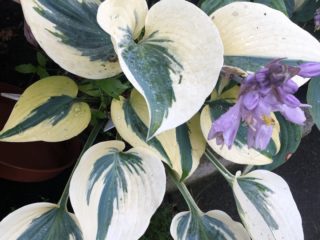Content
Hosta Halcyon is a decorative hybrid variety of shade-tolerant perennial. Unpretentiousness, unusual color and shape of leaves, compatibility with plants in any composition - these parameters make “Halcyon” the queen of the shady garden.
Description of Hosta Halcion
In English, the word "hosta" means "tranquility". "Halcyon" is the bluest variety and does not change color until mid-summer.
First of all, Hosta Halcyon attracts the attention of gardeners with its external parameters:
- The bush of this variety is low, dense, and reaches 55 cm in height when mature. Moderately spreading, the width of the bush is from 35 cm to 70 cm. The shape is almost round, the Halcyon hosta bush looks very neat. The growth rate is average.
- The rhizome is powerful and fully meets the plant's needs for nutrients and moisture.
- Hosta leaves are large, blue in color, one might say green-blue. The color slightly muffles the waxy coating, but this only makes it softer and calmer. The bloom also has a practical benefit - it protects the leaves from moisture loss and sunburn, so the Halcyon hosta variety tolerates planting equally well in partial shade or in a sunny place. Maximum sheet size 16 cm x 10 cm.The texture is dense, the surface is covered with longitudinal deep grooves - veins. The shape is spear-shaped or heart-shaped with pointed ends.
- The flowers of the “Halcyon” variety are funnel-shaped, lavender-colored, and collected in “spikelet” inflorescences. The height of hosta peduncles reaches 80 cm, the width is no more than 70 cm. They are practically leafless. The flowers are fragrant and bloom for 15 to 28 days, usually in July–August.
- Seed pods are formed after flowering in the form of small leathery structures. The seeds of the variety are small.
The plant traditionally grows in China, Japan, Korea - countries of the temperate climate zone, also in the Kuril Islands, Sakhalin Island, and the southwest of the Far East. On the territory of the Russian Federation, the host "Halcyon" is ideally suited to the conditions of the middle zone. Does not tolerate dry air very well.
The frost resistance of the variety is high. “Halcion” can withstand temperatures down to -35 °C. In the northern regions it is recommended for growing in tubs. In autumn it goes into a dormant state. Dying foliage can be removed throughout the season. “Halcyon” is a shade-tolerant variety.
Application in landscape design
This variety is used by designers when creating shady gardens, group compositions with ferns, astilbes, sedges, irises, tiarella and daylilies. Large hybrid bushes look great in solo plantings. A spectacular contrast is provided by the combination of hosta with cereals or sedge. The plant should not be planted next to species that prefer dry sandy or clay soil. Gardeners often include Sunny Halcyon hosta in their compositions. This variety is distinguished by its light green leaves, which turn yellow in summer.
Reproduction methods
It is very easy to propagate perennials.The following options are available for Hosta Halcyon:
- Dividing the bush. You can share hosta “Halcyon” if you are at least 5 years old. The plant must be carefully dug up and divided into parts.
Each “division” should have 2-3 rosettes of leaves. Clean all cuts, sprinkle with crushed coal, and transplant to a new location. The procedure should be carried out in early spring or autumn at the end of the growing season
- Cuttings. This method is used in summer (June-July). The cuttings are lateral shoots, which have leaf rosettes and a “heel”. Such a shoot must be carefully separated from the bush, and the leaves must be cut to 1/3 of the length. Plant in a new location, providing protection from direct sunlight. The soil around the future plant must be moistened periodically, avoiding stagnation of water.
- Seed propagation. Seeds of the “Halcyon” variety can be collected independently or purchased at a specialized store. Plant the grown hosta seedlings in a permanent place in the garden.
Vegetative methods are considered the most preferable. They retain the varietal characteristics of the Halcyon hosta.
About the procedure for dividing a bush at the end of summer:
Landing algorithm
You can plant hosta in open ground in autumn or spring, when the first leaves bloom. Autumn planting of hostas of the “Halcyon” variety is carried out at the end of August or beginning of September, while the weather is warm.
In order for the plant to please the owner with spectacular foliage and delicate flowering, it is necessary to choose the right place. "Halcyon" prefers shaded areas of the garden. More luxuriant flowering and rich foliage color will be in areas with openwork shadow. Hybrid hosta Halcyon loves nutritious, slightly acidic, well-moistened and drained soil. The seedling must be inspected for damage and deterioration.Remove all torn and dry roots, cut off damaged or broken leaves.
Method of planting hostas of the “Halcyon” variety:
- Dig a hole 30 cm deep and about 50 cm in diameter.
- Lay drainage.
- If there are several plants, leave a distance of 30 cm between the holes.
- Prepare a soil mixture of compost, peat, sand and rotted manure in equal proportions.
- Fill the hole halfway with soil mixture, add 1 tbsp. l. complex mineral fertilizer, moisten abundantly.
- Place the hosta seedling and straighten the roots.
- Cover with soil and compact slightly.
- Water the hosta with water.
- Mulch the root circle with a layer of 2-3 cm.
If a container plant is planted, then the dimensions of the planting hole are adjusted to the volume of the coma. Hosta “Halcyon” takes root in 4 weeks.
Growing rules
The undemanding nature of a hybrid does not mean that it does not need care. It is important for gardeners to follow the basic rules for growing the Halcyon variety:
- Watering. The first week after planting, the bush needs to be moistened daily. As it grows, the frequency of watering is reduced; an adult plant is watered once every 3-4 days. Hosta requires regular moisture, but does not tolerate stagnant water. Surface irrigation is not suitable; the soil must be moistened to a depth of 40 cm.
- Feeding. Hosta only needs three meals a day during the season. April is the time to add organic matter (compost, leaf soil, rotted pine bark). End of May – complex mineral fertilizer NPK (according to instructions). After flowering ends, you need to repeat organic feeding.Then stop feeding so that the plant does not waste energy forcing green mass before the dormant season.
- Mulching for the Halcyon hybrid is extremely necessary. A layer of mulch retains moisture, protects the rhizome from drying out, and does not allow pests to easily reach the bush. The optimal layer of mulching material should be about 3 cm; before winter it is increased to 5 cm.
- Loosening will have to be repeated throughout the growing season. The roots of the plant grow, so the procedure must be performed as carefully as possible.
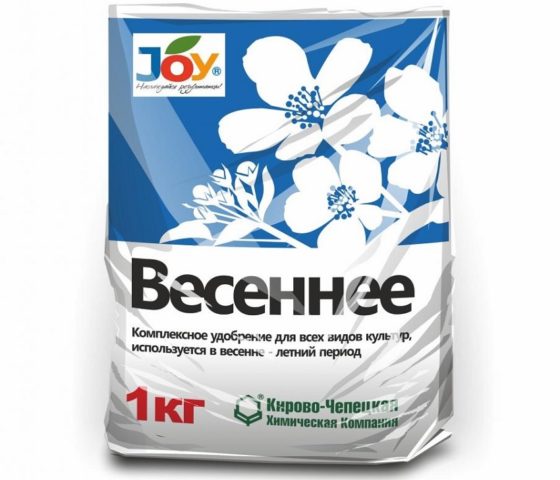
As a top dressing, you can use any complex fertilizer for garden plants.
Preparing for winter
Before the onset of the cold season, it is necessary to carry out preparatory measures. No pruning is required for the Halcyon variety. It is enough to promptly remove flower stalks with faded inflorescences.
It is also not recommended to feed the Halcion variety. The plant will spend a lot of energy growing green mass and will not survive frosts.
Late hosta Halcyon is considered a frost-resistant variety. In the south, it does not require additional shelter for the winter. Where winter is characterized by severe frosts, the hosta needs a little insulation. To do this you will need:
- Bury the bush in a circle.
- Apply a layer of mulch of at least 5 cm.
- Sprinkle with Fitosporin or tobacco dust on top.
- Cover with spruce branches or agrofibre.
It is important that winter soaking does not occur, due to which the main growth point freezes out.
Diseases and pests
If symptoms of viral diseases are found on the plant, then the only treatment method is treatment with fungicides. Among the most common ones, it should be noted:
- Phyllosticosis. Appears on hostas weakened after winter. Symptoms – brown spots with a gray coating appear on the leaves.
- Anthracnose. It develops when the rules of agricultural technology of the variety - watering and fertilizing - are violated.
The main pests of hostas that damage leaves are slugs and weevils.
Young plants are most often the target of attack. Regular inspection of the bush, mulching and treatment with insecticides helps against pests.
Conclusion
Hosta Halcion is an amazingly beautiful plant. The ability to grow in the shade greatly increases its value. By following simple rules for growing a bush, you can easily decorate problem areas or add emphasis to your favorite area.
